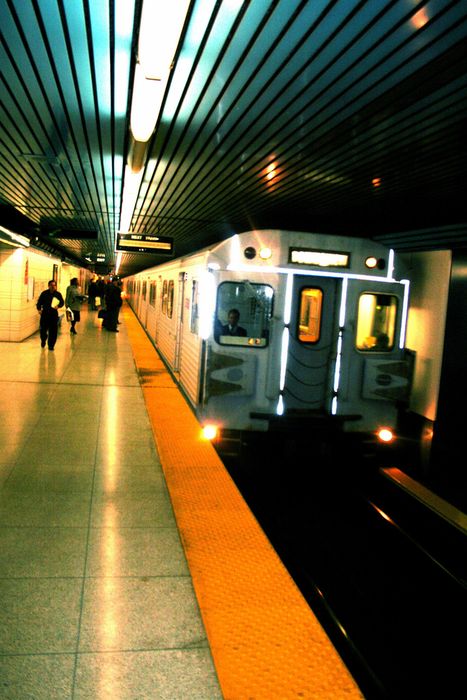
Northboud Subway by Dane
Since 2007, a major public transport shakeup in the Ontario region has been anticipated by the public. The GTA will mostly benefit from the 'MoveOntario 2020' project. This 12-year plan comprises of 52 transit projects including the expansion of various subways, train, bus lines and selected highways. From the real estate point of view this reconstruction will ultimately have a real effect on the real estate demand in the affected regions, alongside with the environmental impact on the life of Torontonians.
The most affected areas
The undergoing or proposed changes will deliver between 10 to 20 per cent increase in the value of real estate properties in the affected regions compared to the rest Toronto. The expansion of Highway 410 to Brampton and the expansion of Highway 427 between Barrie and Pearson International, the creation of six new stations on the Spadina line, the extension of the Scarborough line and various expansions of GO Train lines are among the most important changes.
The strongest positive effect of the above changes will be experienced in the Vaughan Line region (area around the Sheppard West GO Train station and TTC station), Scarborough and Barrie. Positive effect on smaller scale will seen in the Milton region (thanks to the recent addition of the Lisgar station), the North Brampton region (due to the expansion of Highway 410 and Mt. Pleasant TTC station) and Uxbridge & Stouffville region (as a result of addition of Park & Ride Lincolnville GO Train station).
Understanding the way the real estate prices are estimated is a bit a dark art, but here a few of the factors. Since everyone has to leave the house once in a while, accessibility is among the most important variables when calculating property prices. Various studies have concluded that nearby railway station significantly raises the value of property. For example in Portland, houses within 500m range of light rail way station sold by over 10 per-cent more than houses located further away. Overall the positive effect of new stations on the property prices rise is recorded in half-mile range.
Read the full report here.
The positive environmental impact: improving the air quality
Since exhaust gasses contain number of segments harmful to humans, being inhaled long term, they slowly poison our bodies, causing number of serious diseases and often leading to premature death. The respiratory (lungs) and cardiovascular (heart & veins) systems are among the most affected.
Since the air we breathe is not pure, the pollutants and fine particles enter the body through mouth or nose and part of it stays in our lungs, causing its irritation or irreversible damage. Air pollution can either cause or worsen asthma or bronchitis or other chronic respiratory disease, it can cause blood clotting or heart attack and of course it can ultimately lead to premature death. Although the research still continues, there are about 1,700 premature deaths associated to the air pollution in Toronto every year.
What about the drivers?

photo by Benson Kua
The shakeup plan claims to be designed to reduce greenhouse emissions by replacing about 300 million car trips. But will this really work? Is this really the best solution for cleaner air? The plan is clearly concentrating on the public transport changes, favoring the railways, bikers and pedestrians before drivers. Of course expanding capacity of those means of transport is the way to go, but the needs of every-day drivers should not be forgotten. At the moment, drivers in Toronto spend about 67 hours in traffic jams every year. And according to congestion study, in 20 years cars will still account for about 70 per cent of all trips made in Toronto despite the increased capacity of other means of transport.
Since the stop-and-go traffic creates far more exhaust gas than idling, any project claiming its aim is to improve the air condition has to include plans eliminating congestions and improving traffic flow in general.
Or maybe the way to go is to find inspiration in the recent plans of Israel or Denmark. These countries decided to massively promote electromobile vehicles by tax exemptions and by building a giant network of charging stations throughout the country. Drivers and all citizens benefit from the diminished exhaust fumes and quieter streets.



